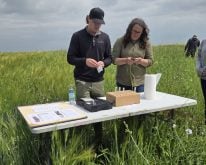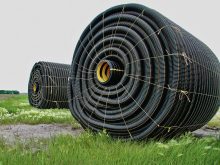Soil tests tell how much nutrients are in the soil, so a farmer can add only what’s needed. It also warns when a field is at risk of losing nutrients. That’s what soil tests are for.
The confusing part is that there are many different soil tests, says Rishi Prasad, a researcher at Auburn University’s Soil and Environmental Sciences Department in Alabama.
“The planet we live on has diverse groups of soils with different chemical and mineralogical properties. Region-specific soil tests were developed in the past to meet the regional needs for agronomic fertilizer recommendation,” said Prasad.
Prasad’s team explored the question of one universal soil test performing better than region-specific soil tests. One effective test would make it much easier to compare results between different areas, he said.
The team compared three common tests: Mehlich 1, Mehlich 3 and Lancaster, all named for the scientists who developed them.
Auburn scientists use Mehlich 1 for some soil types and Lancaster for others. Mehlich 3 was designed to work in most soil types but had not been tested in Alabama to see if it was an effective testing method.
The team collected soil samples from Alabama’s five soil regions and tested them using all three tests for phosphorus levels.
They determined that Mehlich 3 extracted about 1.5 times as much phosphorus as Mehlich 1 and about the same as Lancaster. The conclusion was that Mehlich 3 performed at least as well as the other tests.
They also looked at how the tests measured water-soluble phosphorus, which is readily available to plants. This shows that it is also easily washed away or leached down by rainwater. They discovered that Mehlich 3 was better than the other two tests at accurately measuring this form of phosphorus.
Understanding water-soluble phosphorus is important in Alabama because the large poultry industry produces a lot of manure that’s spread on fields. While it’s a good way to recycle nutrients, the spreading has trade-offs.

While the Mehlich 3 test seemed like the clear winner, it will take more research to fully implement it across Alabama.
“Long-term application of poultry litter in excess of crop requirement leads to buildup of phosphorus in the soil. We needed to find a soil test extractant that can provide a better representation of the phosphorus loss risk from farmlands.
For agronomic fertilizer recommendations within a state or soil region, extensive field calibration and verification studies are required. The calibration study is expensive as well as time consuming.”


















